1859
Signal Flares Used by Ships
Inventor: Martha Coston
US Patent Number: 115,935
Inducted into National Inventors Hall of Fame: 2006

Coston
Following rough sketches left by her late husband, a naval scientist, Martha Coston developed a system of pyrotechnic flares that she sold to the United States Navy. The system of night communication gave the Union a decided advantage in the Civil War, and the company Coston founded for production of the flares remained in business until the late twentieth century. Coston spent ten years testing and refining her process of night flares before patenting it in 1859.
1872
Automatic Engine Lubricator
Inventor: Elijah McCoy
US Patent Number: 129,843
Inducted into National Inventors Hall of Fame: 2001
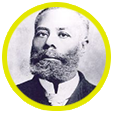
McCoy
Elijah McCoy received his first patent for an automatic lubricating device in 1872. Previously, engines had to be stopped before necessary lubrication could be applied. McCoy’s invention allowed engines to be lubricated while they ran, saving precious time and money. McCoy continued to create improvements on his device, and soon, long distance locomotives, transatlantic ships, and factory machines were using his lubricating invention. His reputation spread, and users of heavy equipment were wary of buying cheap substitutes.
1875
Telephone
Inventor: Alexander Graham Bell
US Patent Number: 174,465
Inducted into National Inventors Hall of Fame: 1974
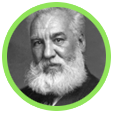
Bell
Alexander Graham Bell’s invention of the telephone grew out of his research on improving the telegraph. Born in Edinburgh, Scotland, he spent one year at a private school, two years at Edinburgh’s Royal High School, and attended lectures at Edinburgh University and at University College in London, but he was largely family-trained and self-taught.
1878
Electric Lamp
Inventor: Thomas Edison
US Patent Number: 223,898
Inducted into National Inventors Hall of Fame: 1973
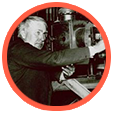
Edison
One of the outstanding geniuses in the history of technology, Thomas Edison earned patents for over a thousand inventions, including the incandescent electric lamp, the phonograph, the carbon transmitter, and the motion picture projector. He also created the world’s first industrial research laboratory.
1884
Fountain Pen
Inventor: Lewis Edson Waterman
US Patent Number: 293,545
Inducted into National Inventors Hall of Fame: 2006
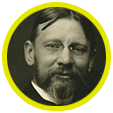
Waterman
Lewis Waterman invented a superior fountain pen that made inkwells and dip pens obsolete. With only five years of schooling, he worked as a teacher, carpenter, and book salesman before becoming an insurance agent. He is said to have vowed to invent a better writing instrument when an inferior pen leaked on an important insurance contract, delaying him long enough that he lost the client.
1895
Radio
Inventor: Guglielmo Marconi
US Patent Number: 586,193
Inducted into National Inventors Hall of Fame: 1975
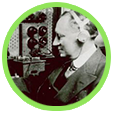
Marconi
In 1895 Italian inventor Guglielmo Marconi built the equipment and transmitted electrical signals through the air from one end of his house to the other, and then from the house to the garden. These experiments were, in effect, the dawn of practical wireless telegraphy or radio.
1895
Cinèmatographe
Inventor: Louis and Auguste-Marie Lumiere
US Patent Number: 591,858
Inducted into National Inventors Hall of Fame: 2007

Lumiere
Louis and Auguste-Marie Lumiere, innovators in photography, designed a camera and projector apparatus called the Cinèmatographe, which became the basis for contemporary cinematic projection. Patented in 1895, the Cinèmatographe was unlike its predecessor, Thomas Edison’s Kinetoscope. Movable and hand-operated with a claw foot to advance the film, the new camera allowed the Lumieres to record footage outside a contained environment.
1896
Transmission Mechanism
Inventor: Henry Ford
US Patent Number: 1,005,186
Inducted into National Inventors Hall of Fame: 1982
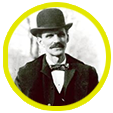
Ford
Pioneering automotive engineer Henry Ford held many patents on automotive mechanisms. He is best remembered, however, for helping devise the factory assembly approach to production that revolutionized the auto industry by greatly reducing the time required to assemble a car.
1902
Airplane
Inventor: Wright Brothers
US Patent Number: 821,393
Inducted into National Inventors Hall of Fame: 1975
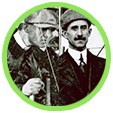
Wright Brothers
Orville and Wilbur Wright, American inventors and aviation pioneers, achieved the first powered, sustained, and controlled flight of an airplane. The Wright brothers are considered inseparable in their aeronautical work.
1912
Vacuum-sealed Ice Cream Freezer
Inventor: Beulah Henry
US Patent Number: 1,037,762
Inducted into National Inventors Hall of Fame: 2006
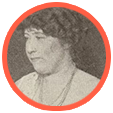
Henry
Beulah Henry became known as "Lady Edison" for the number and variety of devices she invented that made daily life easier. The first of her inventions, a vacuum-sealed ice cream freezer, was patented in 1912. Henry went on to be considered the most prolific woman inventor of the 1920s, and continued to innovate for several decades.
1915
Solid Fuel Rockets
Inventor: Robert Hutchings Goddard
US Patent Number: 2,397,657
Inducted into National Inventors Hall of Fame: 1979
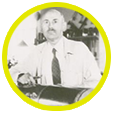
Goddard
Robert Hutchings Goddard pioneered modern rocketry and space flight and founded a whole field of science and engineering. In 1915 he proved that rocket engines could produce thrust in a vacuum and therefore make space flight possible. During World War I, Goddard succeeded in developing several types of solid-fuel rockets to be fired from hand-held or tripod-mounted launching tubes.
1923
Three-way Traffic Signal
Inventor: Garrett Morgan
US Patent Number: 1,475,024
Inducted into National Inventors Hall of Fame: 2005
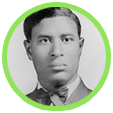
Morgan
In 1923, Morgan patented his best-known invention, the three-way traffic signal. As an early enthusiast of automobiles, Morgan quickly recognized the need for better traffic control on congested city streets. His signal was based on signs that signaled stop and go. He sold his patent rights for $40,000 to General Electric, which developed an electric version.
1926
Television System
Inventor: Philo Taylor Farnsworth
US Patent Number: 1,773,980
Inducted into National Inventors Hall of Fame: 1984
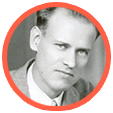
Farnsworth
Philo Taylor Farnsworth’s electronic inventions made possible today’s TV industry, the TV shots from the moon, and satellite pictures. In 1926 Farnsworth joined the Crocker Research Laboratories in San Francisco. At the age of 20 he produced the first all-electric television image.
1948
Vaccines
Inventor: Maurice Hilleman
US Patent Numbers: 3,555,149 & 4,459,286
Inducted into National Inventors Hall of Fame: 2007
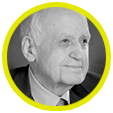
Hilleman
Maurice Hilleman is recognized as the most prolific vaccine scientist of the 20th century, saving more lives than any other scientist. Most of his long career was at Merck, where he led the development of more than three dozen vaccines. Among these are vaccines for hepatitis A and B, Haemophilus influenzae type B (Hib), varicella, and the combined vaccine for measles, mumps, and rubella (MMR).
1972
Modern Athletic Shoe
Inventor: William Bowerman
US Patent Number: 3,793,750
Inducted into National Inventors Hall of Fame: 2014

Bowerman
Bill Bowerman spent 24 years as the head track coach at the University of Oregon where he constantly worked to improve both procedures and equipment, including athletic shoes. His Waffle Trainer sole, first prototyped using his wife’s waffle iron, featured raised nubs similar to those on modern mountain bike tires which gave the shoe traction while maintaining a low weight. In 1964, Bowerman entered a partnership with one of his former athletes, Phil Knight, forming Blue Ribbon Sports, now known as NIKE.
1972
Video Games
Inventor: Ralph Baer
US Patent Number: 3,728,480
Inducted into National Inventors Hall of Fame: 2010
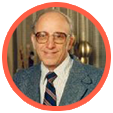
Baer
Engineer Ralph Baer, a pioneer in the field of interactive video games, invented what became known as the Magnavox Odyssey Home Video Game System. Baer developed a number of games that became part of his “Brown Box,” a multi-game console, including ping-pong, handball, soccer, volleyball, target shooting, checkers, and golf. Sanders licensed the technology to Magnavox, which introduced the Odyssey system in 1972.
1973
Internet
Inventor: Vinton Cerf, Robert Kahn
US Patent Number: 6,574,628
Inducted into National Inventors Hall of Fame: 2006
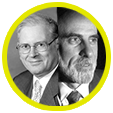
Cerf and Kahn
Vinton Cerf and Robert Kahn designed the architecture of the Internet and the procedures known as the Transmission Control Protocol/Internet Protocol, or TCP/IP, that allow supercomputers and desktop PCs to share the Internet.
1974
Digital Camera
Inventor: Steve Sasson
US Patent Number: 4,131,919
Inducted into National Inventors Hall of Fame: 2011

Sasson
In 1974, Kodak supervisor Gareth Lloyd asked electrical engineer Steve Sasson to investigate whether charge-coupled devices could be used to create an image sensor for a camera. After a year in the laboratory, Sasson created a device that captured an image, converted it to an electronic signal, digitized the signal, and stored the image - the first digital camera.
1975
Solar Thermal Storage Systems
Inventor: Maria Telkes
US Patent Number: 3,986,969
Inducted into National Inventors Hall of Fame: 2012
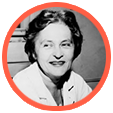
Telkes
Originally from Hungary, Telkes came to the U.S. in 1925, working initially as a biophysicist at the Cleveland Clinic Foundation and then a research engineer at Westinghouse. Later after joining MIT, she worked on the Dover Sun House, which employed a method using sodium sulphates to store energy from the sun. During World War II, she developed a solar distillation device that was included in the military’s emergency medical kits and which saved the lives of downed airmen and torpedoed sailors.
1976
Personal Computer
Inventor: Steve Wozniak
US Patent Number: 4,136,359
Inducted into National Inventors Hall of Fame: 2000

Wozniak
In 1976, Steve Wozniak and Steve Jobs founded Apple Computer, Inc. with Wozniak’s Apple I personal computer. The following year, he introduced his Apple II personal computer, featuring a central processing unit, a keyboard, color graphics, and a floppy disk drive. The Apple II was integral in launching the personal computer industry.
1993
Li/SVO Battery Technology
Inventor: Esther Sans Takeuchi
US Patent Numbers: 5,389,472 & 6,221,534
Inducted into National Inventors Hall of Fame: 2011

Takeuchi
Energy storage expert Esther Takeuchi led efforts to invent and refine the lifesaving lithium/silver vanadium oxide (Li/SVO) battery technology, utilized in the majority of today’s implantable cardioverter defibrillators (ICDs). Takeuchi’s work was conducted during 22 years at Greatbatch, Inc., a major supplier of pacemaker and ICD batteries. Today, over 300,000 ICDs are implanted every year.
